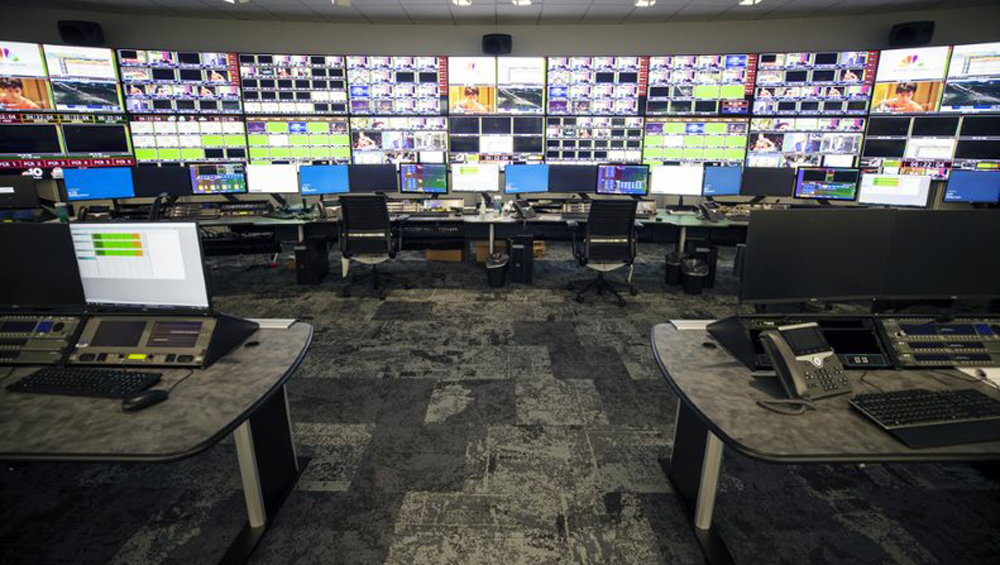
NBCU Stations: Reinvestment Reboots The Future

TVNewsCheck’s Station Group of the Year for 2020 is a phoenix story in a year that can use one.
It’s a story of how a group can be as decimated and dispirited as it gets in this industry and yet still plot a course many steps beyond where most of its competitors have been willing to go.
NBCUniversal Owned Television Stations is that bird. And the arc it has flown out of the ashes of its GE-owned days has illuminated a way forward for the entire local TV business. That way has been marked by targeted investments in its infrastructure, news and weather products, digital platforms and in audience building among what it sees as local news’ future consumers.
It’s as optimistic a story as this business gets, a confidence vote in local TV’s longevity.
And the person who cast that vote and plotted that phoenix’s arc is Valari Staab, NBCU Stations’ president. While many have had a hand in NBCU’s resurgence, they defer to Staab’s future-looking eye as key to the group’s turnaround since she took the helm in 2011. Staab’s story and NBCU’s are inextricably linked. Moving forward is the theme of both. (Editor’s note: Staab will be the subject of a TVNewsCheck profile tomorrow morning.)
Back in 2011 when NBC moved into Comcast’s hands and Staab was freshly hired out of San Francisco’s KGO, GE hadn’t left much with which to work. The station group’s infrastructure was literally crumbling, news trucks were breaking down and staffing had been thinned to the point of badly fraying.
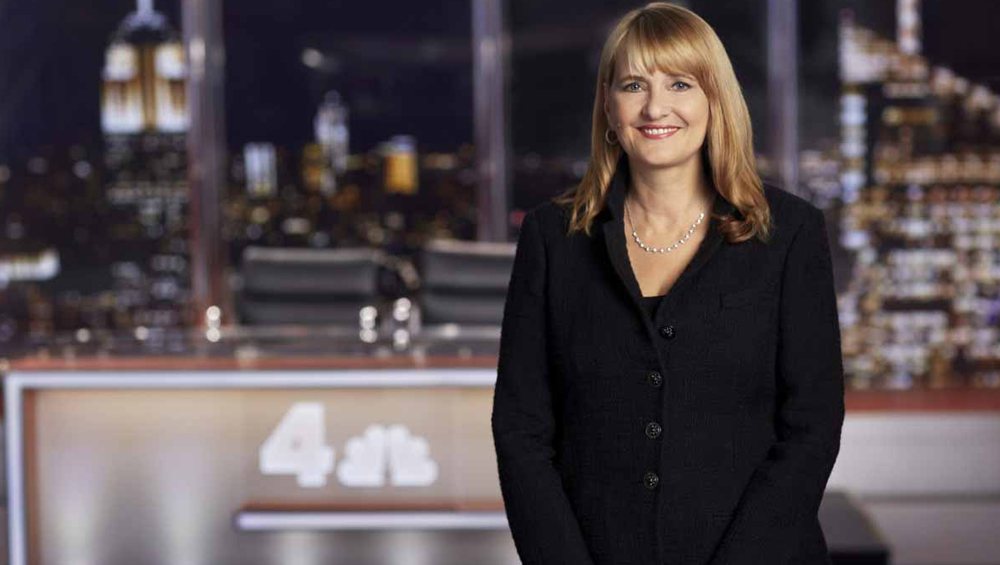
Valari Staab
Staab was brought in by Steve Burke, then CEO of NBCUniversal, with a remit to put a reinvestment plan together and make the stations competitive again in their major markets. “[Burke] knew they needed the investment,” Staab says. “He was ready to spend it, but he needed somebody to put the plan together.”
That plan’s trajectory just happened to push further than broadcasters are typically wont to go.
Technology’s ‘Bleeding’ Edge
Staab began reinvesting in NBCU stations’ infrastructure nearly from the outset of her tenure, but that tentpole of her strategy took a dramatic turn with IP.
NBCU built its first IP-based facility for WCAU in Philadelphia in 2018, the first of its kind among station groups to go with the software-based infrastructure and one of only a handful of such facilities around the world.
“We were on the bleeding edge of that,” says Jeff Morris, SVP of technology and operations for NBCU. “We were out front on a lot of areas on that project, and the results have been very special for us.”
While most broadcasters have opted for a baby steps approach to IP hybridity, NBCU went full in, rationalizing that it didn’t make sense to go forward with new facilities that relied upon a sunsetting SDI-based infrastructure. In the process, it has pulled many of its vendors along with it, passing through a vale that hasn’t been without its tears.
“If your source is not ready to go IP, you have to convert it from one source to the other, and that is still the way it is at some of our facilities,” Morris says. “Our goal is to chip away at that. We have one person on my team whose sole job is to pound the table with our vendors to demand that if they want to be our partner, they have to show us the roadmap for delivering their products with IP virtual compatibility.”
NBCU took what it learned from Philadelphia and made an even bolder step at its KBLR Telemundo station in Las Vegas, where it was the first station in the group to have its news/production infrastructure hosted remotely in an off-site technology center the group built in Dallas.
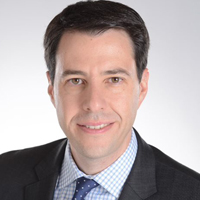
Jeff Morris
“What we really did in Las Vegas was blaze a very, very pioneering trail,” Morris says. “Again, we learned a ton along the way and dragged our vendors and partners with us.”
Earlier this year, NBCU opened the latest — and largest — of its new IP-based facilities in Boston, home to its WBTS and WNEU (Telemundo), along with the regional New England Cable News and NBC Sports Boston, its regional sports network. The 160,000 sq. ft. facility was built for $125 million and takes NBCU’s IP investment to a whole new scale. The IP transition is slated to continue at stations in Orlando and Tampa over the next six months, Morris says.
Noting the level of risk NBCU has incurred in undertaking such projects, Morris credits Staab. “What I feel the most fortunate about is the level of trust she has in me and my team,” he says. “As our portfolio has grown, the value that this team has provided has just shown more and more.”
Ramping Up Weather
Staab believes a strong weather forecast is a cornerstone for market dominance, and has deployed a multi-year, multimillion-dollar investment in weather technology to back that up.
“If you ask viewers what they want out of a weather forecast, they will tell you they want an accurate forecast,” says Nate Johnson, director of weather operations for the group.
NBCU has targeted achieving that accuracy by complementing existing radar networks with a combination of its own fixed and mobile radars to fill in gaps left by the National Weather Service and the Federal Aviation Administration in its markets. Dallas, Chicago, New York, Miami and Southern California have been among the beneficiaries of these additional radars.
“The idea here is to provide our meteorologists with the best, comprehensive set of tools,” Johnson says. “That includes our exclusive tools that give us, in some cases, clear advantages over the government tools that are available.”

Nate Johnson
Also in NBCU’s arsenal is a small fleet of “Storm Rangers,” mobile radars integrated onto Dodge Ram trucks with a broadcasting platform “that we could take to the storm instead of waiting for the storm to come to us,” Johnson says. “The closer you are to the weather, the better picture you are going to get.”
NBCU currently has half a dozen of the $1 million-plus vehicles, some of which move between markets as severe weather dictates.
In addition to forecasting equipment, NBCU is also directing future investments in technologies like augmented reality to improve its weather storytelling. “For example, where we are able to do some things with the weather graphics that allow us to tell a more visual, engaging and informative story,” Johnson says. “Don’t just tell people what is going to happen, but really get into the why it’s going to happen.”
That, in turn, has opened up deeper reporting on climate, he says, especially in NBCU stations in Miami and Washington, D.C., that have garnered national recognition for their climate reporting.
NBCU’s Telemundo stations have also benefitted from the weather investments. The company has been ramping up its hiring of bilingual meteorologists for years and has introduced Spanish-language forecasts and weather apps in its markets “to level the playing field and to make sure we are serving all of our viewers whether they come to us through an NBC channel or a Telemundo channel,” Johnson says.
Telemundo And The Future
The Telemundo stations were added to Staab’s portfolio in 2013, and she saw that as an opportunity to even better pivot the group toward the future. She did so by conjoining the NBCU and Telemundo newsrooms in duopoly markets, cultivating bilingual journalists and forging synergies across the news departments and other operations.
“The youngest part of the country is Latino, so combining the two made sense,” Staab says. “It made sense for giving resources to a Spanish-language TV station that would never be able to afford it if they were standalone, but it’s [also] a huge benefit for the NBC stations because they are learning from the future generations of Americans, bilingual Latinos.”
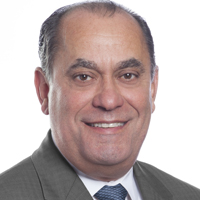
Jorge Carballo
Jorge Carballo, president and GM of WTVJ and WSCV in Miami, remembers the GE days when the two stations moved into the same facility, but were operated separately. “Under GE it was very difficult to operate our business because they were used to an assembly-line type of production and could not comprehend the long-term investment in a product,” he says. “We had nowhere to go back then.”
By contrast, Staab “understands the business and is willing to make the investments and has the vision,” Carballo says.
The result are stations that are more wholly duopolized, he says, with every department from the newsroom to tech ops, sales and creative services working collaboratively. News directors for the respective stations in duopoly markets sit side by side, stations have a single assignment desk and many reporters do double duty for both stations.
“It is endless the things that we do together,” Carballo says, noting that stations still work to keep a distinct brand identity and each tackles the content that’s most appropriate for its specific market on a case-by-case basis. “You don’t want to force a synergy,” he says.
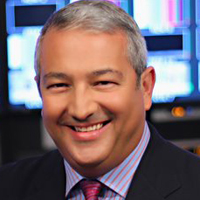
Manuel Martinez
Manuel Martinez, president of the Telemundo Station Group, managed the Telemundo stations in both New York and Miami and has known both the pre-Staab and current days. NBCU’s Telemundo station portfolio has almost doubled in his own tenure with the company, and he says the close working relationship has paid dividends.
“This is such a huge competitive advantage for both of us,” Martinez says. “We are able to compete better than Univision because we have that partnership with NBC, and NBC is able to compete better with ABC, Fox and CBS because they also have an angle — the Hispanic population is growing, and especially the younger Hispanic population is bilingual. This is a very long-term play.”
Digital Developments
Staab’s eight-year stint running KGO in the Bay Area, which saw early local TV collaborations with companies like Twitter and YouTube, deeply impressed upon her digital’s disruptive power. She brought that sensibility over to NBCU, where she has embraced digital platforms as essential to TV stations’ longevity with audiences that have fragmented across a wider media ecosystem.
“She had the instinctual understanding of the value of digital,” says Lora Dennis, SVP of digital media, of Staab’s vantage. “She has allowed us to test and try things.”
Staab has grown the product and design team doing that testing, leading in turn to a UX (user experience) on both the stations’ websites and mobile apps that have a decidedly different feel from the typical TV station-on-the-web look.
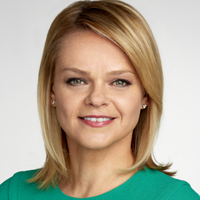
Lora Dennis
Last year, the group ushered in a major digital overhaul with a CMS shift to a customized WordPress platform, allowing for “a modularity in the design” that gives stations wide latitude “to put the content they want front and center,” while retaining a distinct look across the group, Dennis says. A major redesign of the stations’ mobile apps is on tap for next year, though they’ll retain one of the current app’s key characteristics: both news and weather coexist on the same app, a move Staab also spearheaded.
Building robust digital platforms — NBCU’s stations currently iterate content on nearly 20 of them, Dennis says — is an essential move in future audience building. The stations’ 25-54-year-old audience is 10% higher on digital than linear broadcast, Dennis says, though there is substantial crossover between the two.
NBCU has also been cultivating another digital front via NBCLX, a reporting initiative aimed at producing innovative story models geared to younger viewers. What began solely as a digital project just over a year ago has since expanded its distribution into streaming and local multinets via a two-hour newscast five days a week. And there are plans to create more LX content at local stations starting later this year (see TVNewsCheck’s profile of NBCLX here).
NBCU Owned Television Stations, TVNewsCheck’s Station Group of the Year for 2020, have seen a resurgence under Valari Staab’s leadership and bold investments in infrastructure, weather technology, conjoined newsrooms with its Telemundo… Click To TweetPerhaps no digital platform may be more crucial going forward than OTT, and NBCU has been busy planting its flag there, too.
The group has local station apps on both Apple TV and Roku and recently launched a Roku channel for LX with more platforms to follow, while LX content also iterates in the VOD menus of both the station apps and NBC’s Peacock streaming service.
Staab sees Peacock as an important front among many in expanding the group’s streaming audiences. “[Peacock] is excited about having local content and we are excited about the long-term potential to give them local content,” she says.
Across multiple fronts — from technology to weather, diversifying NBCU’s multiplatform offerings to cultivating audiences among young and Hispanic audiences — Staab hasn’t taken her eye off the long term yet.
Read the other Station Group of the Year 2020 stories here.
































Comments (0)